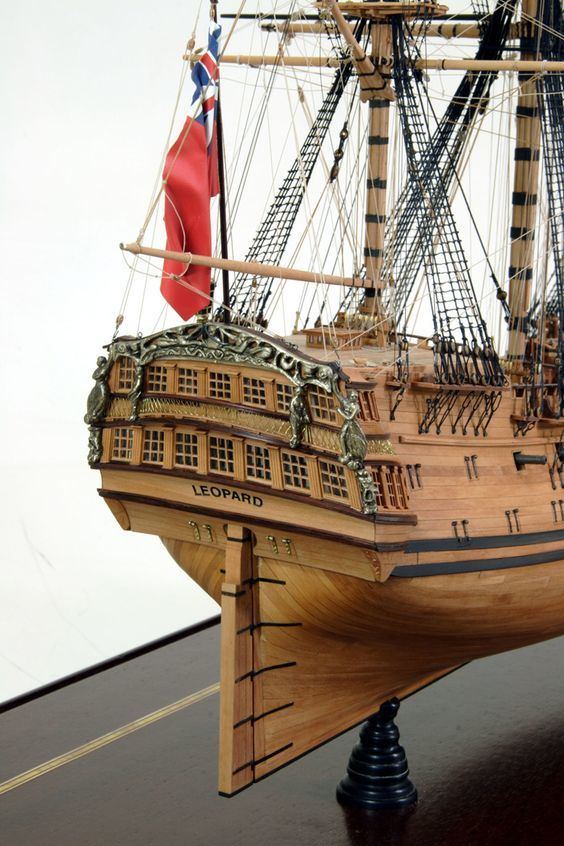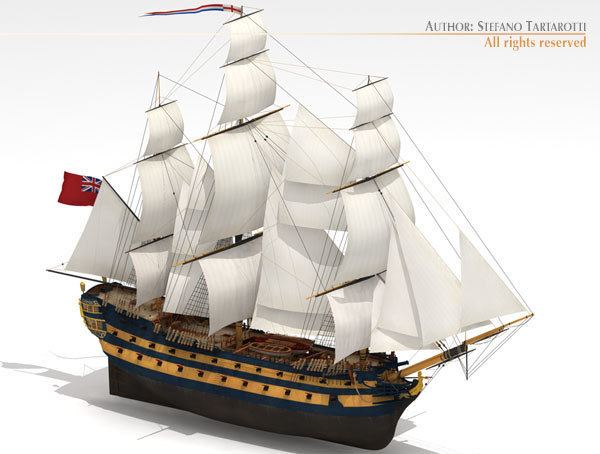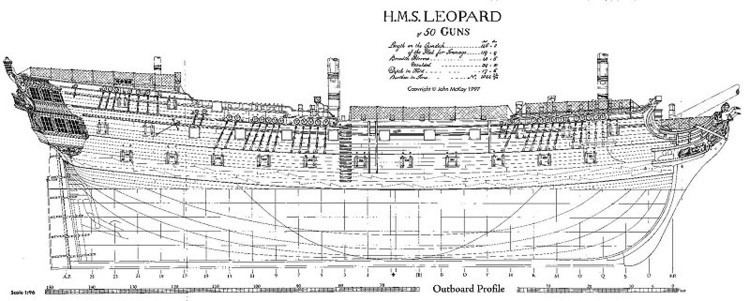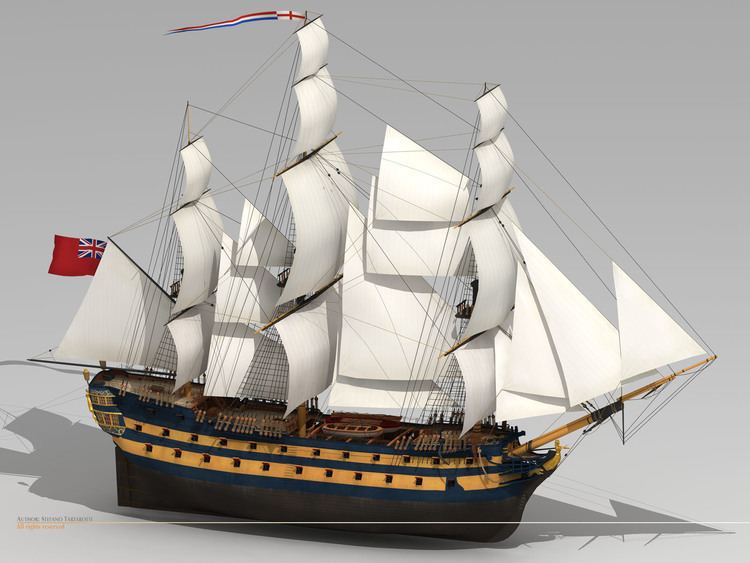Name Leopard Beam 12 m | Completed By 26 May 1790 Launched 24 April 1790 Builder HMNB Portsmouth | |
 | ||
Ordered 16 October 1775Reordered in May 1785 Laid down January 1776 (Portsmouth)7 May 1785 (Sheerness) Honours andawards Naval General Service Medal with clasp "Egypt" | ||
HMS Leopard was a 50-gun Portland-class fourth rate of the Royal Navy. She served during the French Revolutionary and Napoleonic Wars, and was notable for the actions of her captain in 1807, which were emblematic of the tensions that later erupted in the War of 1812 between Britain and America.
Contents
- Hms Leopard 1790
- Construction and commissioning
- French Revolutionary Wars
- The Chesapeake Leopard affair
- Fate
- Leopard in fiction
- References

Hms Leopard (1790)
Construction and commissioning

She was first ordered on 16 October 1775, named on 13 November 1775 and laid down at Portsmouth Dockyard in January 1776. She was reordered in May 1785, ten years after having first been laid down, and construction began at Sheerness Dockyard on 7 May 1785. Work was at first overseen by Master Shipwright Martin Ware until December 1785, and after that, by John Nelson until March 1786, when William Rule took over. She was launched from Sheerness on 24 April 1790, and was completed by 26 May 1790. She was commissioned for service in June that year under her first commander, Captain John Blankett.
French Revolutionary Wars

On 24 October 1798, Leopard captured the French privateer vessel Apollon, which was under the command of captain La Vaillant. On 22 August 1800 Leopard captured Clarice.

Because Leopard served in the navy's Egyptian campaign (8 March – 8 September 1801), her officers and crew qualified for the clasp "Egypt" to the Naval General Service Medal that the Admiralty issued in 1847 to all surviving claimants.
The Chesapeake-Leopard affair
In early 1807, a handful of British sailors—some of American birth—deserted their ships, which were then blockading French ships in Chesapeake Bay, and joined the crew of the USS Chesapeake. In an attempt to recover the British deserters, Captain Salusbury Pryce Humphreys, commanding Leopard, hailed Chesapeake and requested permission to search her. Commodore James Barron of Chesapeake refused and Leopard opened fire. Caught unprepared, Barron surrendered and Humphreys sent boarders to search for the deserters. The boarding party seized four deserters from the Royal Navy–three Americans and one British-born sailor–and took them to Halifax, where the British sailor, Jenkin Ratford, was hanged for desertion. The Americans were initially sentenced to 500 lashes, but had their sentence commuted; Britain also offered to return them to America.
The incident caused severe political repercussions in the United States, and nearly led to the two nations going to war.
Fate
Leopard was part of the convoy assigned to Josias Rowley in the Mauritius campaign of 1809–11 in the Indian Ocean.
In 1812, Leopard had her guns removed and was converted to a Troopship. On 28 June 1814 she was en route from Britain to Quebec, carrying a contingent of 475 Royal Scots Guardsmen, when she grounded on Anticosti Island in heavy fog. The ship was destroyed, but all hands on board survived.
Leopard in fiction
In Patrick O'Brian's novel Desolation Island, the fifth book of the Aubrey–Maturin series, Jack Aubrey commands Leopard on a cruise through the Atlantic and Indian oceans after the Chesapeake-Leopard Affair, a voyage which included the sinking of the fictional Dutch ship of the line Waakzaamheid, and a disastrous collision with an iceberg. In the sixth book, The Fortune of War, the ship is left at a British station in the Dutch East Indies, unable to support her complement of guns. She is called the "horrible old Leopard" in the fourth book in the series The Mauritius Command, and in other books in the series, and ends its days as a store ship sailing from the English Channel to the Baltic.
